When your dog suffers from a seizure, things can get scary. Unless you have prior experience dealing with seizures in dogs, you will feel anxious, helpless and terrified about your dog’s health. That’s normal. But the health outlook for your dog after a seizure is manageable with the right care.
Many factors play into whether a dog will have seizures in its lifetime. Not the least of which is genetic. There are also illness-related seizures – often in dogs who suffer from diabetes or blood illnesses – and there are seizures brought on by ingesting poison.
Idiopathic Epilepsy is the most common cause of seizures in dogs, and normally affects those who have it throughout their lifetimes. Whether your dog suffers a one-off event, or is diagnosed with Idiopathic Epilepsy and suffers from continuous seizures throughout his lifetime, dog seizures are very manageable with the right information – and the right attitude.


What Does a Dog Seizure Look Like?
When your dog is having a full seizure – often called a “grand mal” seizure – the signs are unmistakable. But your dog will experience different stages of a seizure, with different effects.
Pre-seizure: In many cases, your dog will begin to exhibit warning signs that he is about to have a seizure. This stage is called the “aura.” During this period, you will notice odd behaviors from your dog, including anxiety, fear and confusion. Your dog may even lose control of his bowels. Remember, there is nothing you can do to stop a seizure from occurring, so it’s best to just ensure that your dog has space when the seizure happens.
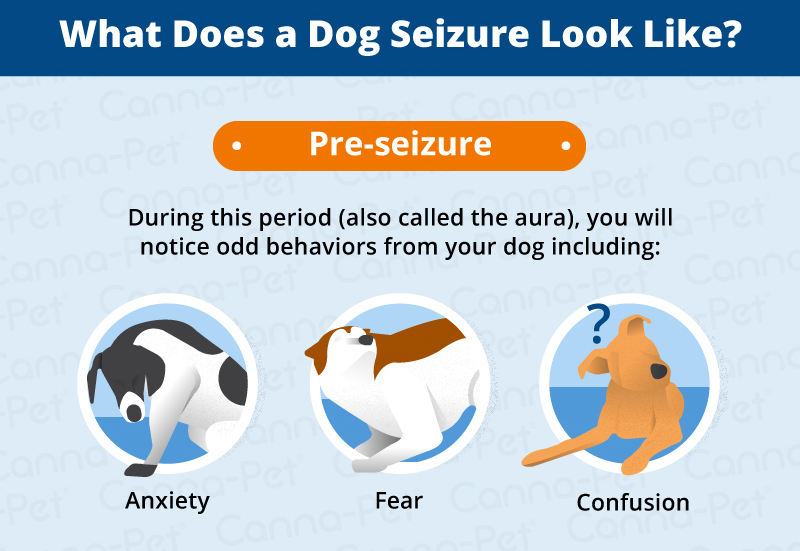
During the seizure: Seizures happen when abnormal electric pulses happen in one or more areas of your dog’s brain. The side effects of dog seizures are similar to what humans having a seizure experience – muscle spasms, foaming at the mouth, making running motions with their legs. It’s all terrifying. But there’s nothing you can do to stop it, so you must let it run its course and ensure that there are no hard objects around that your dog could bump into and injure himself further.
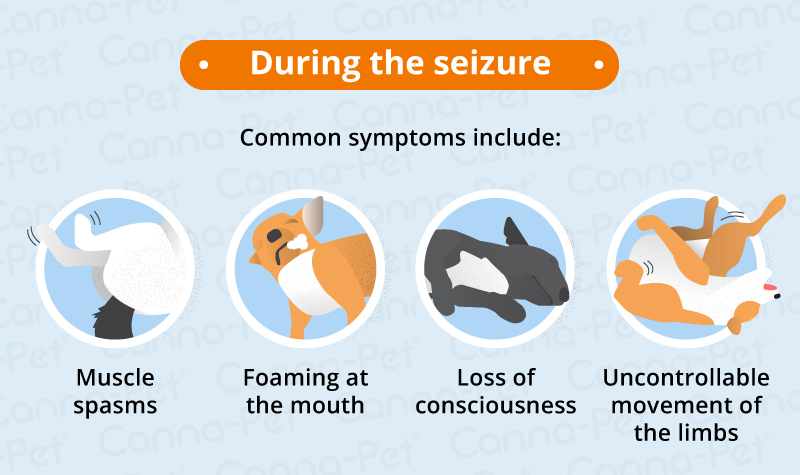
Post-Seizure: After the seizure, you will start to notice the short-term side effects of seizures in dogs. Your dog will be dazed and confused, often walking around aimlessly and exhibiting disorientation. Some dogs experience temporary blindness as well. Many dogs fully recover from post-seizure side effects within minutes. For others, it may take a full day before they are “right” again. During this time, your dog will look to you for comfort. Speak softly to him and reassure him that everything is okay.
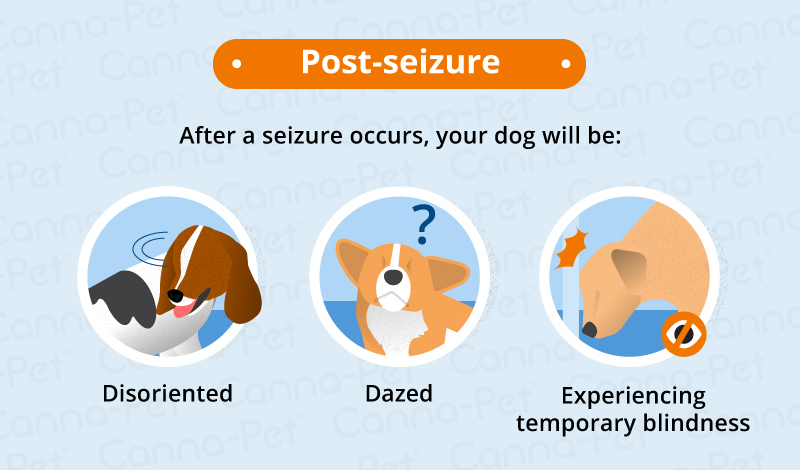
Long-Term Side Effects of Seizures in Dogs
The long-term side effects of dog seizures range from nominal to severe, but most dogs with Idiopathic Epilepsy enjoy full, healthy lives outside of their seizures. The more often your dog has a seizure, the more serious the long-term effects can be – especially if your dog experiences multiple grand mal seizures in a short period of time.
Seizures raise your dog’s body temperature. But because they are generally brief, the effects of one-off seizures are mostly negligible. Multiple seizures in a row, however, can potentially lead to brain damage. Dogs who have experienced more than two seizures over the course of a few weeks should be taken to the vet for medical advice.
There are many existing medications and holistic remedies that help control idiopathic seizures. Depending on the severity of your dog’s condition, she may need to take these medications throughout her life. But medications can have side effects as well.
Depending on which medication your dog takes, side effects can include drowsiness, weight gain, increased thirst, and more. Too many pharmaceuticals over an extended period can also negatively affect your dog’s liver. Discuss medications carefully with your vet, and seek out alternative solutions when prudent.
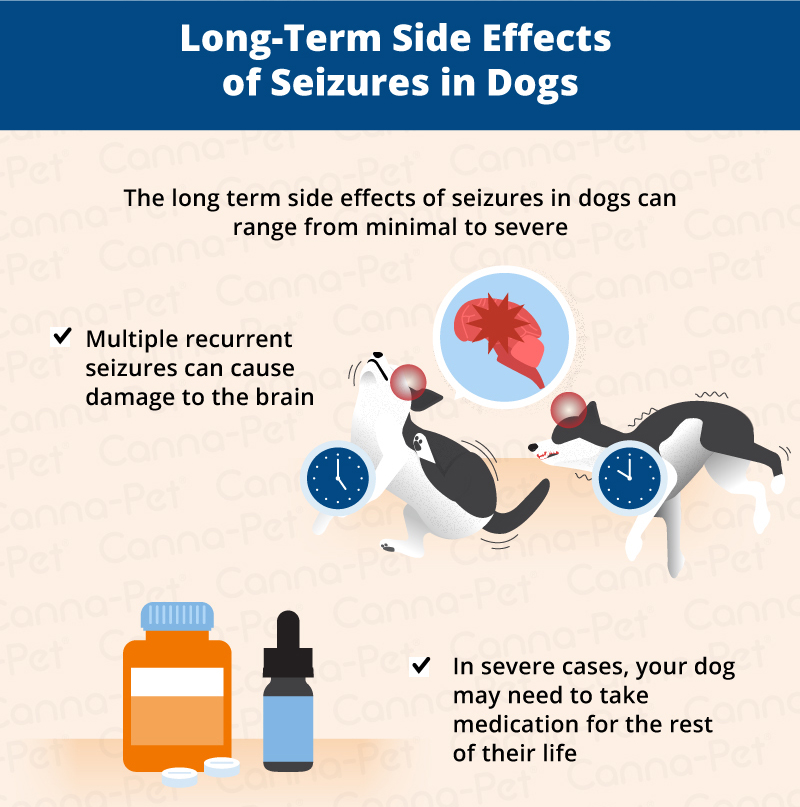
Side Effects of Dog Seizures on Pet Parents
Seizures are stressful experiences for dogs. But they are arguably more stressful for dog owners! The best thing you can do for your dog – and yourself – is stay calm during seizures, comfort your dog when the seizure is over, and do your homework to determine the best treatment for your dog. Remember, your dog wants you to be happy. If you are anxious, she will be too.
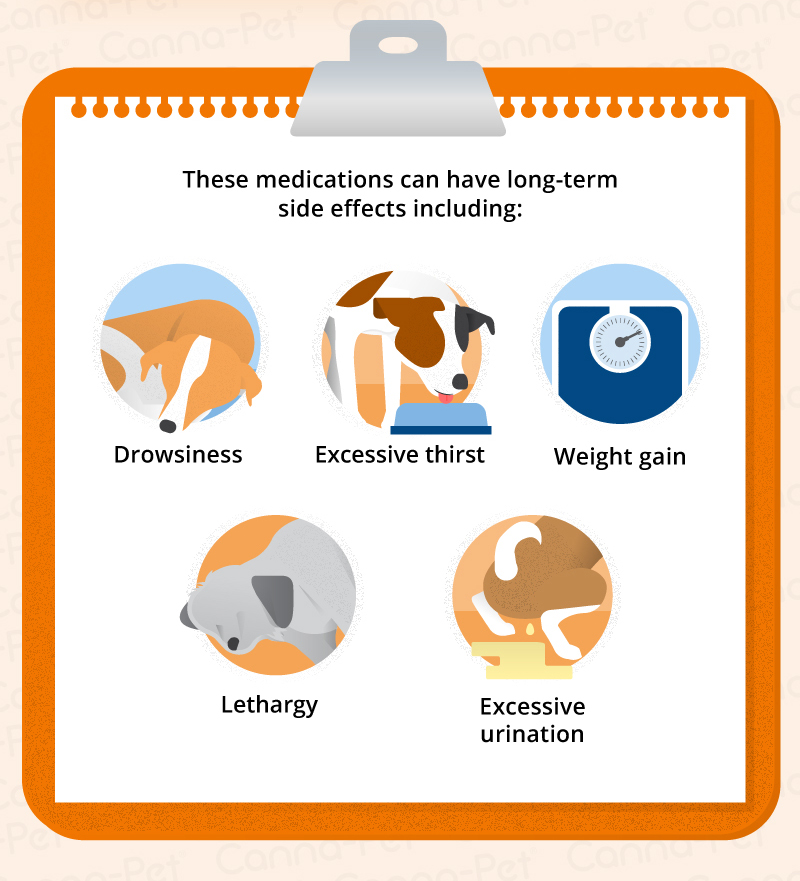
Full Side Effects of Dog Seizures Infographic

Sources:
- “Seizures in Dogs: Causes, Symptoms, & What to Do.” WebMD, 3 March 2017. www.pets.webmd.com/dogs/dog-seizure-disorders#1.
- “How to Recognize and Handle Dog Seizures.” Cesar’s Way, 3 March2017, www.cesarsway.com/dog-care/health-and-care-issues/how-to-recognize-and-handle-dog-seizures.
- “Understanding Canine Epilepsy.” AKC Canine Health Foundation, Accessed 3 March 2017. www.akcchf.org/canine-health/top-health-concerns/epilepsy/understanding-canine-epilepsy.html.
- “Canine Epilepsy.” Pet Health Network, Accessed 3 March 2017. www.pethealthnetwork.com/dog-health/dog-diseases-conditions-a-z/canine-epilepsy.
- “Treatment and Prognosis for Seizures in Dogs.” PetWave, 27 Oct. 2016, Accessed 3 March 2017. www.petwave.com/Dogs/Health/Seizures/Treatment.aspx.





